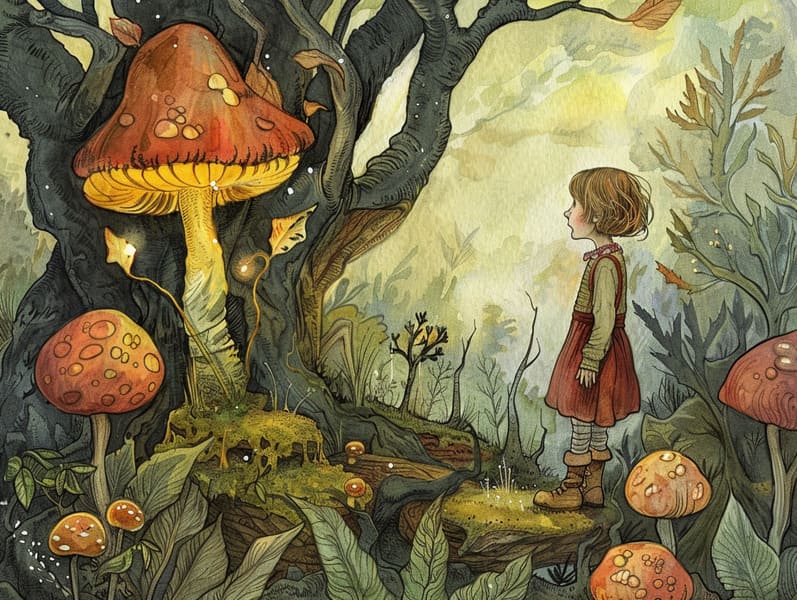The Origins of Online Fairy Tales with the Lasting Grandeur.
The Origins of Online Fairy Tales with the Lasting Grandeur.
Blog Article

Vintage fairy tales have ancient roots. These narratives have been recounted from one generation to the next millennia before they were ever inscribed. They arose from a variety of societies, including Middle Eastern traditions. They were initially conveyed among mature audiences, often carrying themes and messages related to the societal norms and beliefs of the time.
Jacob and Wilhelm Grimm, Jacob and Wilhelm (the Grimm brothers), were among the first to assemble many of these beloved stories. Their volume, "Grimm's Fairy Tales," included classics like "The Story of Cinderella," "The Bread Crumb Trail," and "Schneewittchen," which have since become essentials in the world of children's fairy tales. Similarly, H. C. Andersen's whimsical tales, such as "The Mermaid's Tale," and "The Duckling's Story," have captivated hearts worldwide, establishing their place in the pantheon of famous fairy tales.
Despite their ancient origins, traditional fairy tales remain as relevant as ever, especially as children's bedtime stories. These enchanting tales are now available in many formats, including beautifully illustrated books, magical animations, and online storybooks.
Their lasting appeal can be traced to several whimsical characteristics:
Vital Lessons: Old fairy tales often illustrate important moral lessons. Fairy tales like "The Shepherd Boy and the Wolf" teach the significance of being truthful, while "The Hare and the Tortoise" demonstrate the merits of resolve and humility. These narratives offer kids clear distinctions between correct and incorrect, building their moral compass in a subtle yet significant way.
Sympathy and Perception: Ancient fairy tales frequently present figures facing problems and hurdles, provoking audiences to relate with their struggles and boost their triumphs. For instance, "The Story of Beauty and the Beast" illustrates the significance of seeing inner beauty to see the true being of a being, fostering awareness and recognition.
Cultural Appreciation: Many traditional fairy tales are steeped in the cultural contexts from which they came. Delving into these tales can provide enlightening views into different societies, fostering a sense of cultural respect and awareness.
Inventiveness and Imagination: The fantastical elements in fairy tales—spells and potions—enliven children’s inventiveness. These stories bring readers to imaginary realms, revitalizing inventive thinking and a sense of curiosity that continues a lifetime.
Ancient fairy tales are not only charming but also pedagogical. They work as fascinating tools in advancing various cognitive and emotional skills in the young. When traditional fairy tales are spoken out loud, they boost speech development by teaching new lexicon and sophisticated sentence structures. This practice also fosters hearing perception and focus, as kids stay focused, eager to see what happens next.
Furthermore, exploring the themes and characters of old fairy tales can advance critical thinking and evaluative skills. Kids are guided to notice patterns, anticipate outcomes, and catch on to cause and effect. These contemplations also help children say their thoughts and feelings, boosting their emotional intelligence.
In today’s modern era, the accessibility of internet fairy tales has made these stories more reachable than ever. Websites and web apps feature vast collections of popular fairy tales that can be seen or listened on anytime, anywhere. Fairy tales read out loud are particularly sought after, offering an delightful method for young ones to savor these charming stories. Read-aloud stories and read-out-loud stories take characters and settings to life, often complemented by whimsical background sounds and music that augment the storytelling journey.
The everlasting appeal of old fairy tales lies in their ability to adjust to present days while continuing with their underlying messages. Contemporary versions of these tales often introduce more inclusive protagonists and modern settings, making them understandable to today’s audience. However, the main ideas of courage, humanity, and fair-mindedness remain unchanged, continuing to influence young readers of all ages.
Ancient fairy tales also offer a sense of contentment and recognition. They extend a methodical narrative with a recognizable beginning, middle, and end, often closing with the ending of conflicts and the triumph of morality over immorality. This dependability can be soothing for children, giving a sense of unwaveringness in an fluid world.
Timeless fairy tales continue to enthrall and teach new generations, maintaining their delight and significance in modern society. As children's night stories, they render a perfect blend of fantasy and learning, furthering moral values, empathy, and creativity. The prevalence of online fairy tales and the well-received status of fairy tales read aloud secure that these classic stories remain attainable to new generations.
By conserving and relating these stories, we continue to admire the get more info rich tapestry of cultural heritage and cultural heritage. Whether you are perusing a artistically illustrated book, accessing a digital library, or listening via an narrated book, the elegance of classic fairy tales is always within reach. These fairy tales demonstrate of the immortal ability of storytelling and its ability to connect us across centuries and lands.
If you are browsing a richly illustrated book, browsing a cyber collection, or listening through an sound book, the captivation of timeless fairy tales is always within reach.
These fairy tales demonstrate of the immortal ability of fairy tales and its ability to tie us across time and space, casting a charm that charms and informs alike.